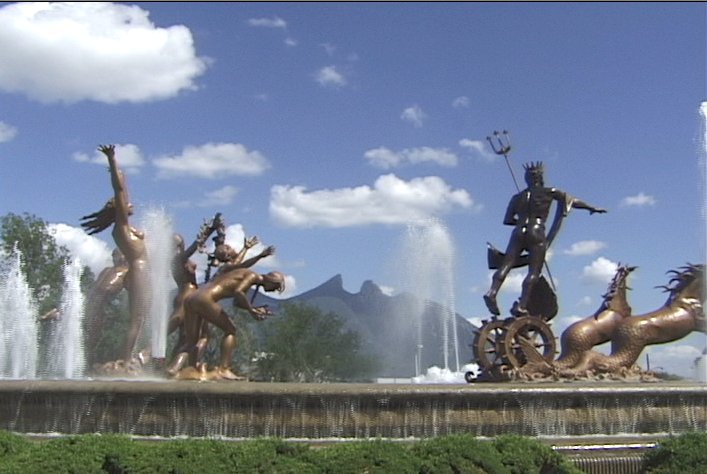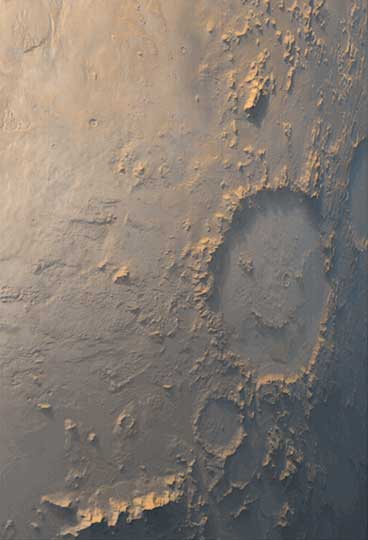http://en.wikipedia.org/wiki/Triton_%28mythology%29 wrote:
<<Triton (Τρίτων) is a mythological Greek god, the messenger of the sea. He is the son of Poseidon, god of the sea, and Amphitrite, goddess of the sea, whose herald he is. He is usually represented as a merman, having the upper body of a human and the tail of a fish, "sea-hued", according to Ovid "his shoulders barnacled with sea-shells". Like his father, Poseidon, he carried a trident. However, Triton's special attribute was a twisted conch shell, on which he blew like a trumpet to calm or raise the waves. Its sound was so terrible, that when loudly blown, it put the giants to flight, who imagined it to be the roar of a mighty wild beast. A family of large sea snails, the shells of some of which have been used as trumpets since antiquity, are commonly known as "tritons."
According to Hesiod's Theogony, Triton dwelt with his parents in a golden palace in the depths of the sea; Homer places his seat in the waters off Aegae. The story of the Argonauts places his home on the coast of Libya. When the Argo was driven ashore in the Gulf of Syrtes Minor, the crew carried the vessel to the "Tritonian Lake", Lake Tritonis, whence Triton, the local deity euhemeristically rationalized by Diodorus Siculus as "then ruler over Libya", welcomed them with a guest-gift of a clod of earth and guided them through the lake's marshy outlet back to the Mediterranean.
Triton was the father of Pallas and foster parent to the goddess Athena. Pallas was killed by Athena during a fight between the two goddesses. Triton is also sometimes cited as the father of Scylla by Lamia. Triton can sometimes be multiplied into a host of Tritones, daimones of the sea.
...................................................
http://uncyclopedia.wikia.com/wiki/Trumpet wrote:
<<During an episode of Survivor: Prehistoric Ethiopia, the contestants from the "Oooga" tribe were pitted against the "Booga" tribe in a footrace. In order to attain victory, and create an unfair advantage, the "Oooga" tribe conspired to destroy the village of the "Booga" tribe. Seconds before the raid on the village, a trumpet was played by Survivor host Jeff Probst. The "Oooga" tribe was given kerosene and matches, created the first controlled fire, and won immunity.>>
...................................................
In Wordsworth's sonnet "The World Is Too Much with Us" (ca 1802), the poet regrets the prosaic humdrum modern world, yearning for
- glimpses that would make me less forlorn;
Have sight of Proteus rising from the sea;
Or hear old Triton blow his wreathèd horn.
The name Triton is associated in modern industry with tough hard-wearing machines such as the Ford Triton engine and Mitsubishi Triton pickup truck. In a new SpongeBob SquarePants special, Spongebob releases him from a cage and Triton attacks Bikini Bottom.>>
 Two Hours Before Neptune
Two Hours Before Neptune







